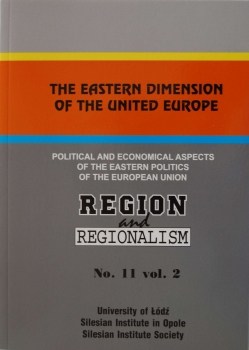
The West (the EU and NATO) and its eastern neighbours: fading interests, weakening ties?
The aim of this paper is to present the changing relationships between the West (understood as the European Union, NATO and their member states) and its eastern neighbours (above all Ukraine, Belarus and Moldavia) over the last two decades after the end of the cold war. For the sake of this paper, the three above mentioned countries are referred to as ‘Eastern Europe’ (EE) which, however, does not mean that Russia is excluded from Europe – a more adequate but awkward term would be ‘Non-Russian Eastern Europe’. Direct or indirect western neighbours of EE countries are countries that can be termed as ‘Eastern Central Europe’ (ECE) or ‘eastern part of Central Europe’, formed by former members of the Soviet block and now independent states, members of the EU and NATO. Of special importance for their connections with the EE countries are the three Baltic states, Poland and Romania. These two groups of countries form a large geographical and historical (geopolitical) space that can be called ‘East-Central and Eastern Europe’ (EC and EE). This area was once called (mainly by German politicians and scholars) ‘Mitteleuropa’, or Mid-Europe, meaning ‘in-between Europe’, a kind of ‘nobody's land’ between Germany and Russia. Given that some initiatives of the West are addressed not only to the EE but also to three former Soviet republics in the Caucasus – Georgia, Azerbaijan and Armenia, these countries are also taken into consideration, as elements of ‘Eastern neighbours’ (together with EE countries) of the West. The aim of this paper is to outline problems and tendencies, not to give an exhaustive review of literature on the subject.




